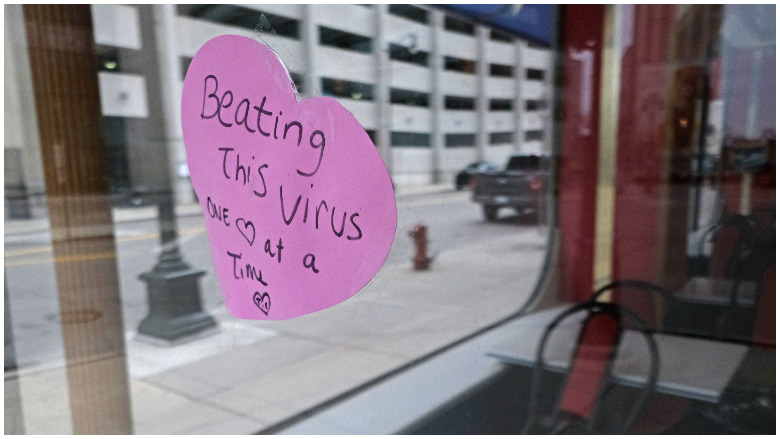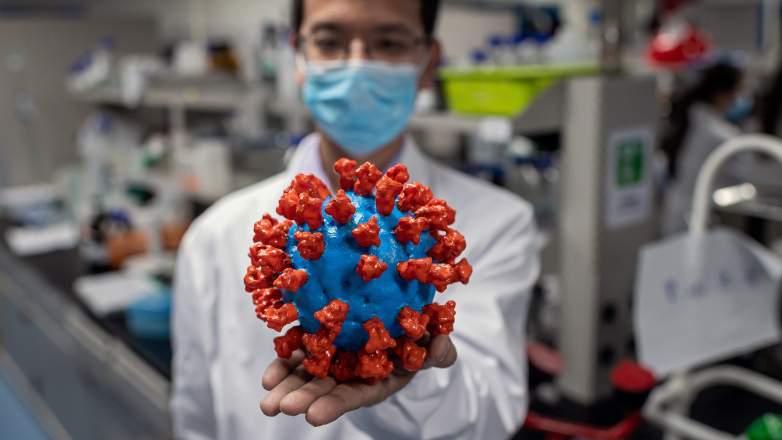
Getty What are the early symptoms of coronavirus? (COVID-19)
Data from a major research project called the COVID Symptom Study has identified “six distinct ‘types’ of COVID-19, each distinguished by a particular cluster of symptoms.” Some of them are more dangerous to the patient than others, according to an article posted on the project’s website.
“…The team found that these types differed in the severity of the disease and the need for respiratory support during hospitalisation,” the article reported on July 17, 2020. “The findings have major implications for clinical management of COVID-19, and could help doctors predict who is most at risk and likely to need hospital care in a second wave of coronavirus infections.”
The news comes as COVID-19 is spiking in some states throughout the United States.
What is the COVID Symptom Study? According to the website, it’s an app that “asks participants to log their health and any new potential symptoms of COVID-19 on a daily basis. With more than 4 million users, this represents the largest study of its kind in the world.”
“The COVID symptom study was created by doctors and scientists at Massachusetts General Hospital, the Harvard T.H. Chan School of Public Health, King’s College London and Stanford University School of Medicine, working with ZOE – a health science company,” its website says.
“This app was built in the US to support studies like the Nurses’ Health Study. This is one of the largest and longest-running scientific studies in the world with 280,000 participants stretching back to 1976…The app is now available to anyone in the US or UK who wants to help. The app will be used to study the symptoms of COVID-19 and track the spread of this virus.”
“These findings have important implications for care and monitoring of people who are most vulnerable to severe COVID-19,” explains “consultant geriatrician” Dr. Claire Steves in the article. “If you can predict who these people are at day five, you have time to give them support and early interventions such as monitoring blood oxygen and sugar levels, and ensuring they are properly hydrated – simple care that could be given at home, preventing hospitalisations and saving lives.”
Here’s what you need to know:
Researchers Identified One of the Clusters as Being More Likely to Lead to the Need for Breathing Support

GettyIn this picture taken on April 29, 2020, an engineer shows a plastic model of the COVID-19 coronavirus.
The researchers noted that two symptoms were reported by all people reporting symptoms. They are headache and loss of smell. However, there were also “varying combinations of additional symptoms at various times. Some of these, such as confusion, abdominal pain and shortness of breath, are not widely known as COVID-19 symptoms, yet are hallmarks of the most severe forms of the disease.”
These are the six clusters:
1 (‘flu-like’ with no fever): Headache, loss of smell, muscle pains, cough, sore throat, chest pain, no fever.
2 (‘flu-like’ with fever): Headache, loss of smell, cough, sore throat, hoarseness, fever, loss of appetite.
3 (gastrointestinal): Headache, loss of smell, loss of appetite, diarrhea, sore throat, chest pain, no cough.
4 (severe level one, fatigue): Headache, loss of smell, cough, fever, hoarseness, chest pain, fatigue.
5 (severe level two, confusion): Headache, loss of smell, loss of appetite, cough, fever, hoarseness, sore throat, chest pain, fatigue, confusion, muscle pain.
6 (severe level three, abdominal and respiratory): Headache, loss of smell, loss of appetite, cough, fever, hoarseness, sore throat, chest pain, fatigue, confusion, muscle pain, shortness of breath, diarrhea, abdominal pain.
Which cluster was most dangerous to people’s health? #6.
They discovered that only 1.5% of people with cluster 1, 4.4% of people with cluster 2 and 3.3% of people with cluster 3 COVID-19 required breathing support. These figures were 8.6%, 9.9% and 19.8% for clusters 4,5 and 6 respectively. Furthermore, nearly half of the patients in cluster 6 ended up in hospital, compared with just 16% of those in cluster 1.
People with symptom clusters 4, 5, 6 tended to be older and in poorer health, with pre-existing conditions, the research found.
The Centers for Disease Control & Prevention Lists 11 Main COVID-19 Symptoms

GettyA Malian researcher conducts a COVID-19 coronavirus test, at the University Clinical Research Center of Bamako, on March 19, 2020.
The U.S. Centers for Disease Control & Prevention has been gradually expanding its list of main COVID-19 symptoms. There are now 11 symptoms on that list. They are:
Fever or chills
Cough
Shortness of breath or difficulty breathing
Fatigue
Muscle or body aches
Headache
New loss of taste or smell
Sore throat
Congestion or runny nose
Nausea or vomiting
Diarrhea
“People with COVID-19 have had a wide range of symptoms reported – ranging from mild symptoms to severe illness. Symptoms may appear 2-14 days after exposure to the virus,” CDC reports. The list does not contain all possible COVID-19 symptoms, the CDC advises.
READ NEXT: Remembering Summer Taylor, the Seattle Protester Struck by a Car.